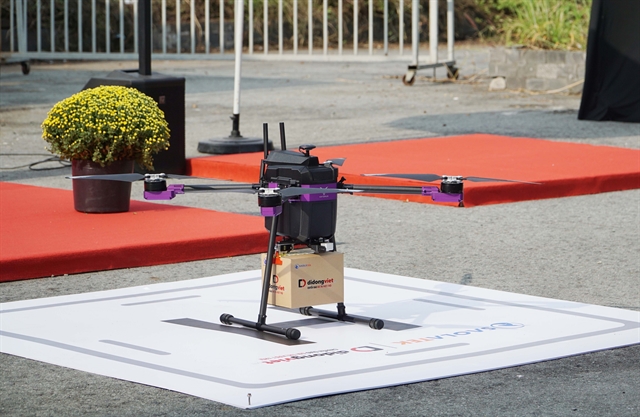 Opinion
Opinion

The number of cases of pink eye (conjunctivitis) disease has been rapidly increasing nationwide, with many severe cases of conjunctivitis with pseudomembrane requiring eye surgeries. Lê Xuân Cung, head of the Cornea Faculty at Vietnam National Eye Hospital, talks to Vietnam News Agency about this matter.
 |
| Lê Xuân Cung, head of the Cornea Faculty at Vietnam National Eye Hospital. — Photo baophapluat.vn |
What are the differences in pink eye disease this year compared to in previous years?
The condition has been spreading for two to three months, and the difference is that it has been occurring for a more extended period. There is a significant number of patients coming to the Vietnam National Eye Hospital for check-ups. The number has been decreasing in recent days, but there are still many cases. Sometimes, one-third of our hospital’s incoming patients are pink eye cases.
The outbreak of this disease normally occurs during the hot sunny season. Then it gradually decreases when entering autumn. But this year, the number of pink-eye cases is still high even though it is the middle of autumn now.
Another difference is that there are many severe cases this year, with patients experiencing acute inflammation and having pseudomembrane. The disease will last for several weeks before recovery in these cases.
Patients with pink eye tend to recover within a shorter time recently. However, there are more complications in cases in which the conjunctivitis is less severe.
Have there been any severe cases caused by complications of the disease?
The pink eye disease is an acute conjunctivitis caused by a virus affecting the thin, transparent layer of tissue that covers the white part of the eye and lines the inside of the eyelids (conjunctiva). It does not affect a patient’s vision, but when complications involve inflammation of the cornea, it will cause blurred vision, as if looking through scratched glasses.
Some patients experience sensitivity to light or perceive green halos due to light scattering when the cornea becomes inflamed. In some cases, the condition may improve, but then patients suddenly experience blurry vision. This could be a sign of corneal involvement, and treatment would be different in such cases. If corneal inflammation is not treated promptly, it can lead to dangerous complications. It is now a threat to the patient’s vision.
Our hospital has not recorded many severe cases of pink eye, as this disease is usually a mild condition. When patients seek timely treatment, they can recover in one or two weeks.
However, in cases when patients delay the treatment or self-treat, complications affecting the cornea can occur. In severe situations, corneal ulcers due to inflammation can develop. But most corneal inflammation cases recover after a few days of treatment.
Many people buy medicine to treat pink eye at home. What is your opinion on this practice?
Since this disease occurs annually, patients may think it is a common disease and find medicine themselves. At drug stores, pharmacists will sell antibiotics or a combination drug with antibiotics and anti-inflammation agents, which do often help resolve the condition.
However, there are also cases in which patients do not respond to the medication, leading to worsening symptoms and severe inflammation. In such cases, we must employ other treatment methods to protect the patient’s vision.
 |
| A patient with severe pink eye and complications requiring pseudomembrane removal is being treated at the Vietnam National Eye Hospital. — VNA/VNS Photo Minh Quyết |
Can you explain the initial symptoms in patients with conjunctivitis with pseudomembrane?
Conjunctivitis with pseudomembrane is a severe form of conjunctivitis. It is usually caused by a virus or bacterial infection affecting the eye. Pseudomembrane is a white, opaque inflammatory membrane that adheres to the back of the eyelid and is only visible when the eyelid is flipped up. The presence of pseudomembrane indicates that the eye's immunity has weakened, and the conjunctivitis tends to be more severe. Symptoms of the disease include redness and discharge from the eye, along with a feeling of grittiness, as if there is sand inside the eye, causing discomfort to the patient.
That leads to swollen eyes and many individuals may find it challenging to open their eyes in the morning, with the eyelids sticking together, and difficulty in opening and seeing clearly, accompanied by excessive tearing.
For these cases, patients should consult a doctor and have the pseudomembrane removed to reduce inflammation.
Can patients contract the disease again after recovering? If so, how long might it take?
In theory, when we contract any disease, especially infections caused by viruses, the body will develop immunity against it, preventing re-infection. However, pink eye disease has numerous strains of viruses. Therefore, it is possible that an individual may be infected with one strain but can still contract a different strain in the future.
Many parents have expressed concerns that schools have students with pink eye attending classes as usual. What advice do you have regarding this matter?
Many parents are worried that their children will fall behind in their studies, so they try to send them to school even their children have pink eye. However, from an epidemic prevention perspective, they should stay at home to prevent spreading the infection to other children.
Additionally, children at home can adhere to the treatment regimen. It’s easier for them to use medication as directed by doctors.
What are the initial symptoms of pink eye disease?
When people develop pink eye disease, they will initially experience symptoms such as redness in the eye, followed by itching. Then the eye gradually becomes swollen and redder. Some individuals may experience swelling, excessive tearing and a gritty sensation in the eye.
If patients notice these symptoms, they should consult a doctor for early treatment and not spread the disease to others.
Patients at home with pink eye disease often turn to electronic devices for entertainment or take advantage of them for work and study. What are your thoughts on this?
Patients should leave their eyes relaxed, so it is essential to limit the use of smartphones, televisions or other electronic devices. Prolonged use of eyes can lead to more discomfort and make the treatment process longer.
Additionally, using electronic devices can distract patients from adhering to the treatment regimen. For instance, doctors ask patients to use eye drops four to five times a day, but they may forget to do this if engrossed in using electronic devices, which can affect the recovery process.
What advice do you have to limit the spread of pink eye disease?
It's important for each of us to have an awareness of infection control to reduce the risk of spreading the disease to others. This can be achieved by wearing dark glasses to prevent eye contact and wearing a mask. If you need to cough, make sure you do so into your elbow or a tissue to avoid spreading it to others. Patients should also wash their hands frequently, especially after touching their eyes or administering eye drops.
Swimming pools are an environment where the disease can spread rapidly. Eye secretions from infected individuals can quickly contaminate the water, so people with pink eye disease should avoid swimming. If patients have to be in crowded places, they should wear glasses and masks, and try to maintain physical distance, refraining from shaking hands or close contact. — VNS




